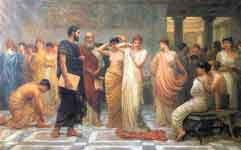
Zeuxis Choosing Beauty, Edwin Long, 1885
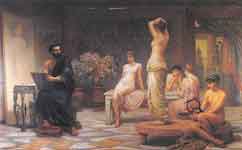
Another version: The Choosen Five, Edwin Long, 1885, Russell Cotes Gallery and Museum
Zeuxis ( Ζεύξις) and Parrhasius, painters of Ephesus in the 5th century BC, are reported in the Naturalis Historia of Pliny the Elder to have staged a contest to determine which of the two was the greater artist. When Zeuxis unveiled his painting of grapes, they appeared so luscious and inviting that birds flew down from the sky to peck at them. Zeuxis then asked Parrhasius to pull aside the curtain from his painting. When it was discovered that the curtain itself was Parrhasius' painting, Zeuxis was forced to concede defeat, for while his work had managed to fool the eyes of birds, Parrhasius had deceived the eyes of an artist.
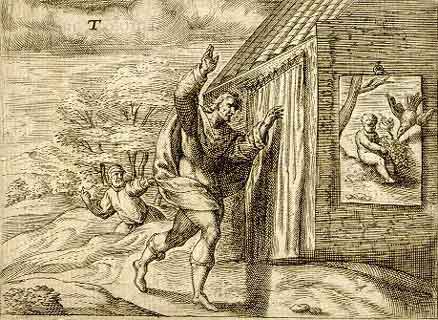
Zeuxis and Parrhasius
Zeuxis most notable works included Helen, Zeus Enthroned, and The Infant Hercules Strangling the Serpent. He is said to have laughed to death at one of his own paintings.
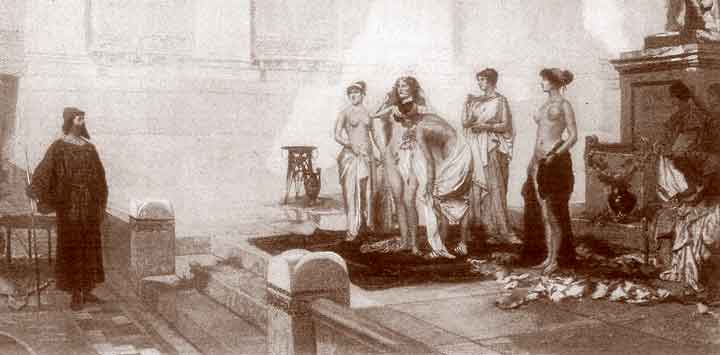
Zeuxis chooses five models from Croton for his Helen of Troy
Who where the two artists of ancient times who competed to see who could paint the visible world most faithfully? “Now I shall prove to you that I am the best,” said the first, showing the other a curtain which he had painted. “Well, draw back the curtain,” said the adversary, “and let us see the picture.” “The curtain is the picture,” replied the first with a laugh.
During this entire voyage of mine on the Aegean I had sensed with profundity that the curtain is truly the picture. Alas for him who tips the curtain in order to see the picture. He will see nothing but chaos.
I remained plunged in solitude’s austere silence for many additional days. It was spring; I sat beneath the blossoming lemon tree in the courtyard, joyfully turning over in my mind a poem I had heard at Mount Athos: “Sister Almond Tree, speak to me of God.” And the almond tree blossomed.
Truly, the curtain embroidered with blossoms, birds, and men - this must be God. This world is not His vestment, as I once believed; it is God himself. Form and essence are identical. Nikos Kazantzakis
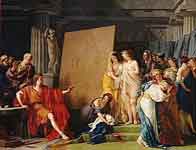

Stelios Lydakis, Ancient Greek Painting and Its Echoes in Later Art Publisher: Getty Publishing ISBN: 0892366834
See also Painting (Zographia, Graphe)
Artist
A - B - C - D - E - F - G - H - I - J - K - L - M -
N - O - P - Q - R - S - T - U - V - W - X - Y - Z
Retrieved from "http://en.wikipedia.org/"
All text is available under the terms of the GNU Free Documentation License
| Ancient Greece
Science, Technology , Medicine , Warfare, , Biographies , Life , Cities/Places/Maps , Arts , Literature , Philosophy ,Olympics, Mythology , History , Images Medieval Greece / Byzantine Empire Science, Technology, Arts, , Warfare , Literature, Biographies, Icons, History Modern Greece Cities, Islands, Regions, Fauna/Flora ,Biographies , History , Warfare, Science/Technology, Literature, Music , Arts , Film/Actors , Sport , Fashion --- |

